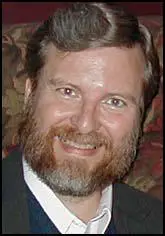William M. Law

William Matson Law was born in Oregon. His interest in the assassination of John F. Kennedy began in 1975 when he first saw the Zapruder Film on television. Another important factor was reading Best Evidence by David Lifton. Law began researching the assassination and his work appeared in November Patriots by Constance Kritzberg and Larry Hancock, JFK The Medical Evidence by Vincent Palamara and Murder in Dealey Plaza edited by James Fetzer.
Law has written for The Kennedy Assassination Chronicles and the Dealey Plaza Echo. His book, In the Eye of History: Bethesda Hospital Medical Evidence in the JFK Assassination (2005). Co-written with Allan Eaglesham, the book includes interviews with Dennis D. David, Paul K. O'Connor, Jerrol F. Custer, James W. Sibert, Francis X. O'Neill, Harold A. Rydberg and Saundra K. Spencer.
Primary Sources
(1) William Matson Law, In the Eye of History (2005)
The gentlemen interviewed for this book are among the most important figures involved in the aftermath of one of the darkest turning points in this nation's history: the assassination of President John F Kennedy. Thousands of articles and books have been written about the murder of the thirty-fifth president of the United States. Even some of the best are long on theory and short on fact.
My idea was simple: contact those who had been involved in the events at Bethesda Naval Hospital on the evening and night of November 22-23, 1963, and ask them to take me, step by step, through their recollections of what they had seen, done and heard and put their words on record. I wanted to meet these individuals face to face, to look into their eyes and get an impression of how they had felt during those momentous events.
I tried to start with a clean slate as far as my own opinions on the Kennedy assassination were concerned. However, try as I might, I have not been able to remain neutral. "You have to make a choice," former FBI agent Francis X. O'Neill told me when I explained that I was not taking any side in the controversy, just reporting what I was told. "You have to make choices when putting together pieces from first-, second- or sixth-hand information," he told me. Mr. O'Neill may or may not be surprised to learn that he pushed me to the side of conspiracy (despite his forcefully expressed opinions to the contrary).
I learned what most people have learned who have studied the case in depth: things just don't add up. From Lee Harvey Oswald's murky life as a marine, Russian defector, pro/anti-Castroite, until the day he wound up in the Dallas School Book Depository on Elm street, and his death in the basement of the Dallas County jail, it doesn't add up. Similarly, the differing descriptions of the wounds on the president's body as seen in Parkland Memorial Hospital, the differing types of caskets that the body was seen in, the differing descriptions of the wrappings on the body, the amateurish autopsy photographs supposedly taken by civilian photographer John Stringer (who has been described as one of the best medical photographers in the world), the X-rays of the skull showing a large fragment of bullet that the autopsy doctors looked for but never found-the list goes on and on just don't add up.
(2) William Matson Law, In the Eye of History (2005)
Perception can be mercurial and I am well aware of the frailty of memory. Nevertheless, the human consciousness can be stamped with impressions that are indelible. Memories of seminal events can last a lifetime, and I believe this to be true for those present in the autopsy room at the Bethesda Naval Hospital on the evening of 11/22/63.
The passage of years has blurred recollection of details, and the individuals involved have, naturally, spoken with each other. They are aware of inconsistencies. Still, each continues to tell the version of events that memory dictates. It was, after all, their perceptions and feelings that I wanted to explore. 1 neither expected nor hoped that their stories would dovetail neatly. In fact, I would have been suspicious of collusion if that had turned out to be the case. Each had specific tasks according to his training, and each has a unique set of recollections that only partially overlaps with those of the others. And those observations and feelings, when combined with those of the witnesses in Dealey Plaza and the testimony of the doctors and nurses in attendance in Trauma Room One at Parkland Hospital, form the mosaic of conspiracy.
The Bethesda witnesses are the cornerstone of the cold-blooded conspiracy that removed the chief executive of the United States. These young men - the best and the brightest of their generation, foot soldiers on the field of history-had their idealism and innocence shattered on that long-ago November night. If the Warren Report is the official history of the Kennedy assassination, then the Dealey Plaza witnesses, the Parkland physicians and nurses and the Bethesda enlisted men are the counterbalance to that history.
Albert Einstein once said, "I do not believe God plays dice with the cosmos." And I do not believe that the life of John Fitzgerald Kennedy was ended by the lone action of a malcontent. There was order. There was planning. And there was control in the chaos of Dallas and Bethesda.
